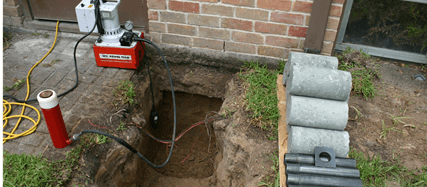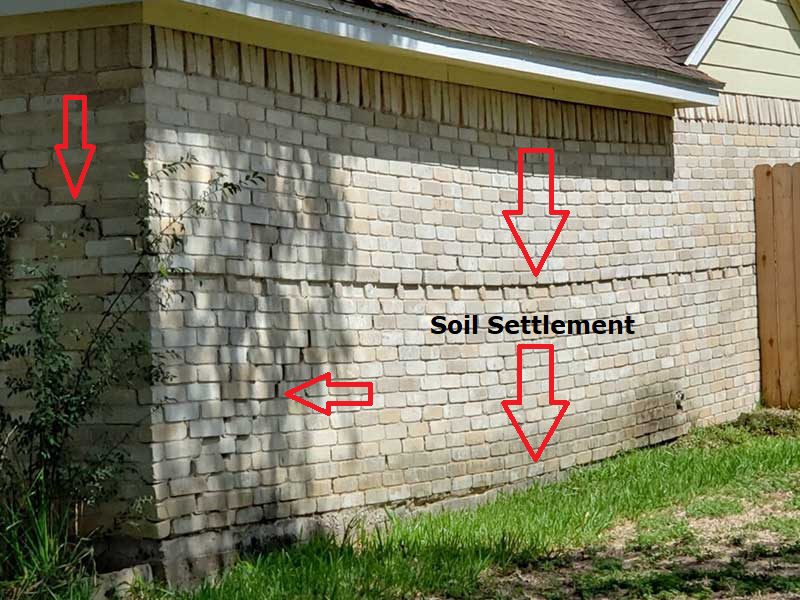Exploring Various Approaches of Structure Fixing for Various Dirt Kinds
Foundation fixing is a critical aspect of preserving structural stability, specifically when considering the varied difficulties posed by various soil types. The intricacy of soil habits under differing problems necessitates a tailored strategy to repair, making sure optimal remedies such as helical piers for unsteady dirts or chemical grouts for cohesive layers. The concern remains: just how do we identify the most effective approach for each distinct circumstance? Comprehending the interplay between dirt characteristics and repair service strategies is critical, yet there is even more to reveal in the pursuit for lasting options. What aspects really dictate the choice of approach?
Understanding Soil Kinds
Soil kinds play an essential duty in the security and long life of structure structures, making it important for house owners and building experts to comprehend their qualities and behavior. The communication in between dirt and structure can identify the structural integrity of a structure. There are several soil types, each with distinctive physical residential or commercial properties that affect just how structures are designed and maintained.
Granular soils, such as sand and crushed rock, supply good drainage and are typically thought about stable. They have high load-bearing abilities, which can sustain heavier frameworks. These soils can move if not compressed appropriately, leading to potential negotiation problems. On the other hand, natural soils like clays and silts display various behaviors. These dirts often tend to keep dampness, and their load-bearing capability can vary substantially with modifications in dampness material.
Rocky dirts, understood for their toughness and security, deal superb assistance for structures but might call for specialized devices for excavation. Alternatively, fertile dirts, which are a well balanced mix of silt, sand, and clay, often offer desirable conditions for foundation assistance as a result of their moderate drainage residential or commercial properties.

Comprehending these soil types is important for picking appropriate structure repair work approaches, guaranteeing the sturdiness and safety of frameworks over time.
Challenges With Extensive Clay
Among the various dirt types, large clay offers special obstacles for foundation security because of its tendency to undergo significant quantity modifications with wetness variant. This kind of dirt swells when wet and agreements when dry, which can apply considerable pressure on frameworks. These changes can lead to structure breaking, heaving, and negotiation problems, posing substantial risks to the structural stability of structures.
The obstacles with large clay are aggravated by its plasticity index, which determines the dirt's capability to change form and volume. A high plasticity index shows higher possibility for motion, raising the possibility of damage to structures. This is especially bothersome in regions experiencing constant or severe weather modifications, where cycles of damp and dry problems are common.
In addition, the depth of large clay layers can vary, complicating the analysis and planning of appropriate structure repair approaches. The uncertain nature of its movement requires specialized engineering solutions to alleviate threats. Additionally, extensive clay can influence utility lines, walkways, and driveways, additionally making complex fixing initiatives. These intricacies call for a detailed geotechnical examination to make certain efficient foundation repair work methods are executed, emphasizing the significance of resolving large clay difficulties with knowledge and treatment.
Solutions for Sandy Soils
Sandy dirts, identified by their large fragment dimension and reduced communication, existing distinctive difficulties for structure stability as a result of their propensity for changing and erosion. These residential properties require specialized foundation fixing strategies to make sure architectural honesty. One effective solution is using deep structure systems such as helical piers or driven stacks. By securing the foundation to deeper, much more secure dirt layers, these systems can offer the required assistance to combat the changing nature of you could try here sandy dirts.
Another advised technique is the application of dirt stabilization methods. Chemical grouting, as an example, involves injecting a stabilizing representative into the soil, which enhances cohesion and lowers permeability. This process aids to solidify the sandy substrate, thereby reducing the threat of disintegration and activity.
Furthermore, setting up appropriate water drainage systems is critical in sandy soil conditions. Guaranteeing appropriate drain can avoid water accumulation around the structure, which often worsens disintegration and soil variation. Methods such as French drains or surface grading can be used to route water away from the building perimeter.
Addressing Clearing Up in Loamy Soils
Loamy dirts, understood for their balanced mix of sand, silt, and clay, offer a fertile base for lots of structures but can in some cases lead to structure settling as a result of their one-of-a-kind make-up. This well balanced appearance provides exceptional water drainage and nutrient retention, making it optimal for agriculture and landscaping. This same attribute can come to be problematic for structures, as shifts in dampness content check that can trigger the soil to expand or contract, leading to resolving.
Dealing with clearing up in loamy soils calls for a multifaceted technique. Accurate soil screening is important to determine the particular composition and wetness material of the loam. When data is collected, carrying out appropriate drainage services is essential to maintain consistent wetness degrees, therefore decreasing the threat of soil contraction or expansion. French drains or surface grading are effective approaches to reroute water away from the structure.

Cutting-edge Fixing Methods
In the world of foundation repair service, cutting-edge methods are continuously being created to attend to the complex challenges postured by numerous soil problems. As dirt types differ substantially in their structural properties, typical methods might not always are adequate. The advent of brand-new modern technologies in structure repair service offers much more tailored remedies, making sure security and longevity.
One try this notable technology is using helical piers, which are especially reliable in extensive or unsteady soils (foundation repair oklahoma city). These piers are screwed right into the ground until they get to a steady layer of dirt, supplying strong assistance for the structure above. This method decreases disturbance and is adaptable to various soil types, making it a functional remedy
One more cutting-edge strategy is the application of polyurethane foam shot. This approach entails injecting high-density polyurethane foam under the foundation to load gaps and maintain the structure. It is a less intrusive option to standard underpinning, supplying quick setup with marginal disruption to the surrounding location.
In addition, soil stabilization techniques, such as using chemical grouts, have actually gained grip. These substances boost soil toughness and lower permeability, avoiding future shifting. Collectively, these ingenious repair techniques provide efficient solutions for the diverse challenges posed by differing dirt conditions.
Conclusion

Foundation repair service is a critical element of keeping structural integrity, especially when thinking about the varied challenges positioned by various soil types (foundation repair okc). The complexity of soil behavior under varying problems demands a customized approach to repair, ensuring optimum solutions such as helical piers for unstable dirts or chemical cements for natural layers. By anchoring the foundation to deeper, more secure dirt layers, these systems can provide the required support to combat the changing nature of sandy dirts
Structure repair work needs mindful consideration of soil types to ensure stability and longevity. Chemical grouts boost soil stamina and lower permeability in natural dirts.